Amabel and Martijn Visscher: Data drives profits for young Tongala dairy farmers
Amabel and Martijn Visscher are using smart technology and data analysis to take their northern Victorian dairy to the next level.
Building an efficient, profitable dairy business is all about harnessing the power of data for Amabel and Martijn Visscher.
The young Visschers both grew up on family farms in northern Victoria, and have inherited a wealth of dairying know-how.
Now running their own 180-cow milking herd on 100ha at Tongala, they combine passed-down knowledge with data-driven decision-making to create a sustainable, profitable enterprise with environmental and animal welfare at its core.
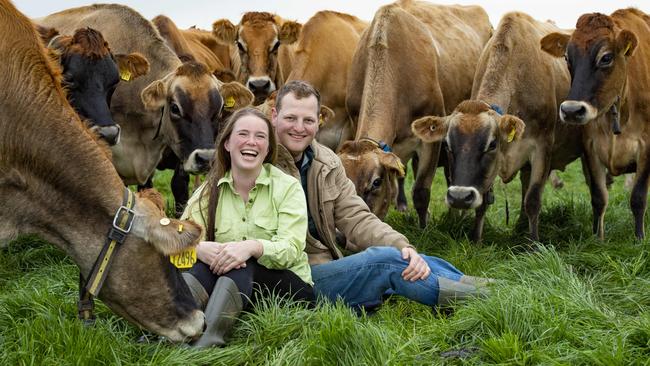
“We have this opportunity to run this place how we want, and we are running with that opportunity,” said Amabel, who grew up on her parents’ 900-cow operation at Cobram.
“Marty’s big passion is around automation, robotics. He’s worked on a lot of other properties that have that type of technology. We really want to embrace those new technologies on-farm.”
Martijn added: “We want a more controlled and data-oriented business.”
Amabel and Martijn milk 180 Jerseys twice a day in a 20 swing-over dairy that came with the property. They bought the farm in February 2021 with some financial backing from Martijn’s parents through a succession plan.
Their aim is to increase the herd to 220 in two years as cost-effectively as they can.
To do that, they have overhauled irrigation infrastructure, implemented an innovative approach to feeding young stock, invested in heat-detection collars to finetune joining and built a pit silage system that ensures about two years of feed is available on-farm.
The herd averages 1.9 kilograms of milk solids per cow per day, which is up on their starting point two years ago of 1.3kgMS.
BUILDING NUMBERS
One of their first strategic decisions was to rear young stock in a feedlot system, where they could carefully control nutrition.
“We didn’t buy any young stock with the place. And we have seen numbers dwindling over the past couple of years,” Amabel said. “We haven’t been able to keep up with replacements.
“As young people just starting in the industry, these high cattle prices have been really challenging. We got in with being able to buy the land just in time, before the skyrocket (in land prices).
“(With the feedlot) we can make sure we get them joined really early and they start producing milk as soon as possible, because we are able to guarantee the growth rates we need in this system,” Amabel said.
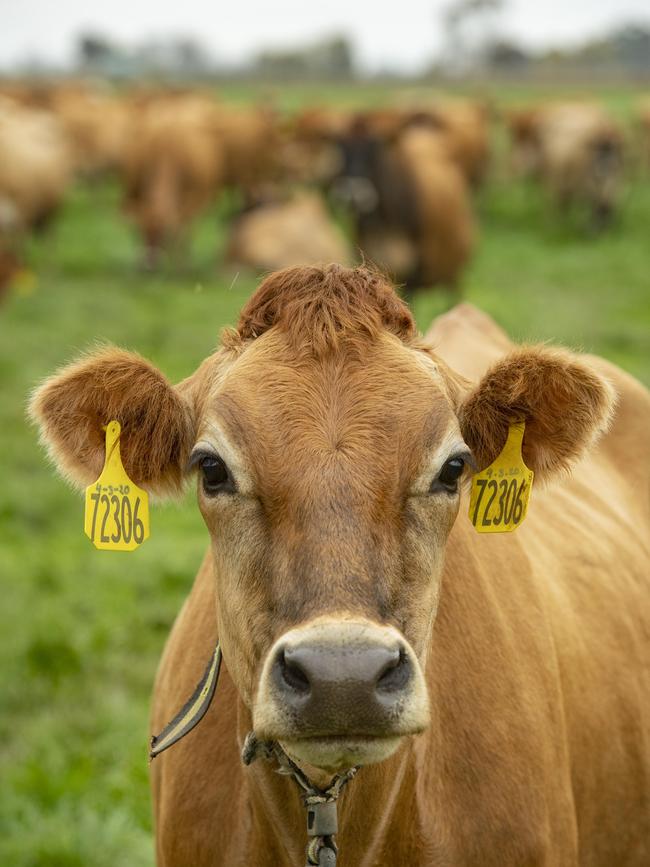

Calves are fed in three groups: 3-6 months, 6-13 months, and 13-months-plus, with heifers joined at 13-14 months using artificial insemination.
“We only do sexed semen and beef semen,” Amabel said. “All of our beef animals we either sell them privately to people who are going to grow them out, or grow them out ourselves.”
Their first heifers are due to calve in October.
“Longevity is the ultimate goal; an animal that you have for a long time is the most profitable animal,” said Amabel, adding that they also choose semen and cull based on production.
Uniquely, the Visschers do AI twice a day at each milking, and use data from their heat-detection collars to finetune the process.
“We have the collars on the cows to get them in calf as soon as possible and not have the manual task of identifying heats,” Martijn said.
Investment in the collars was made possible through a grant. The system monitors rumination and activity to pinpoint the perfect window for joining individual cows, which is important with sexed semen, which has shorter shelf life, narrower breeding window and is nearly double the cost of non-sexed.
“The smart thing about the collars” Amabel said “is that they learn from themselves. It learns what each cow’s normal is and will tell you when there is a change from that cow’s normal.”
An auto-draft gate in the dairy works in conjunction with the collars.
WATER WISE
The Visschers also invested in irrigation upgrades early on, with two-thirds of the property now under lateral irrigator.
Martijn said the new system used one megalitre less water per hectare to start their autumn crops, compared with the previous flood irrigation.
“A big difference between this irrigation and flood is that flood is just one amount over the whole paddock, whereas with this I can go anywhere from 10mm of water on a patch up to 50mm,” he said.
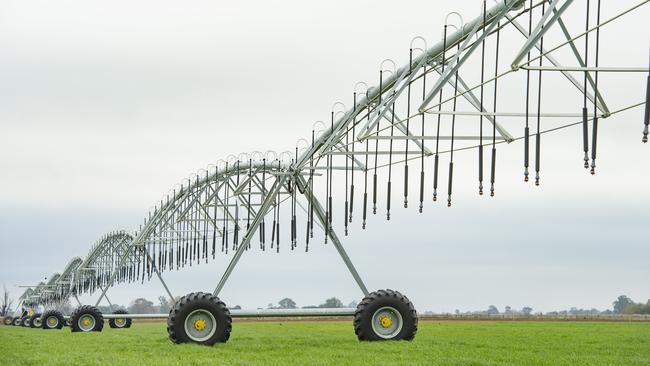
Martijn’s next step is to install soil moisture probes, so he can tailor water delivery by paddock, crop type, season, soil moisture and weather forecasts.
Currently, they are growing grazing wheat and ryegrass for strip grazing, with plans to establish stands of lucerne and maize. They have bought standing crops from other local farmers to shore up feed.
Martijn uses a pit system for storing silage. It’s a method he refined when working for his parents, who are now retired but ran a successful 500-cow enterprise for the past two decades.
“My parents moved from the Netherlands in 2000, when I was young,” he said. “We had 60 cows over there and had all pit silage. To me it didn’t seem unachievable to do pit silage for a smaller than average herd.”
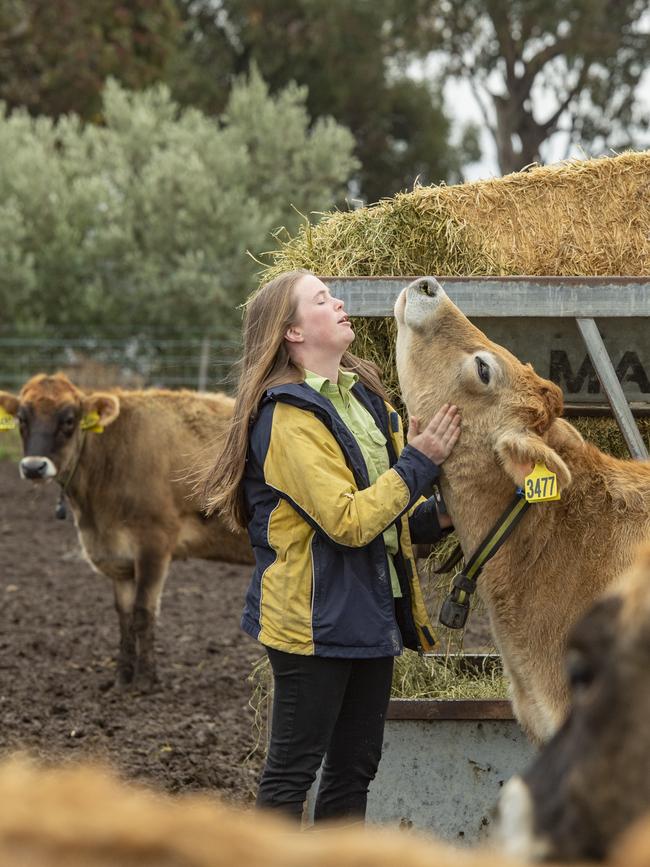
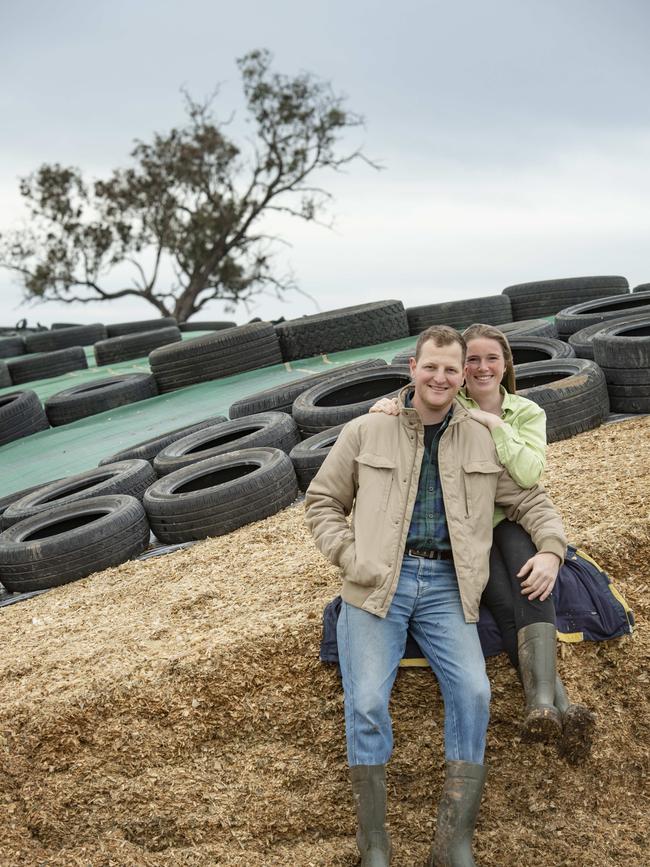
Amabel said they wanted to avoid costs associated with changing farming systems, so decided on pit silage from the get-go. Balancing quality and quantity is their priority, and they have about 500 tonnes of dry matter on farm, with the herd’s diet made up of silage, grazed pasture and grain.
Soil tests completed this year led to lime application, and repeat testing will inform future fertiliser application.
“We want to make sure we are feeding the soil at least at the same rate as we are taking away from it,” Amabel said.
“That is for the sociological aspect … we do want to leave the land better than when we started, but there is a financial reward to that as well.
“We are making sure the calcium is up, we are spending less money on bug sprays, we are spending less money on milk-fever packs because our cows aren’t going down at calving, so it really is both aspects.”
While talk in the industry is dominated by farm gate prices and interest rates, the couple enjoy security in a multi-year contract to supply Riverina Fresh. They have also locked in interest rates on their debt.
Their next priority is improving their feed storage to minimise waste, as feed is their biggest business cost.
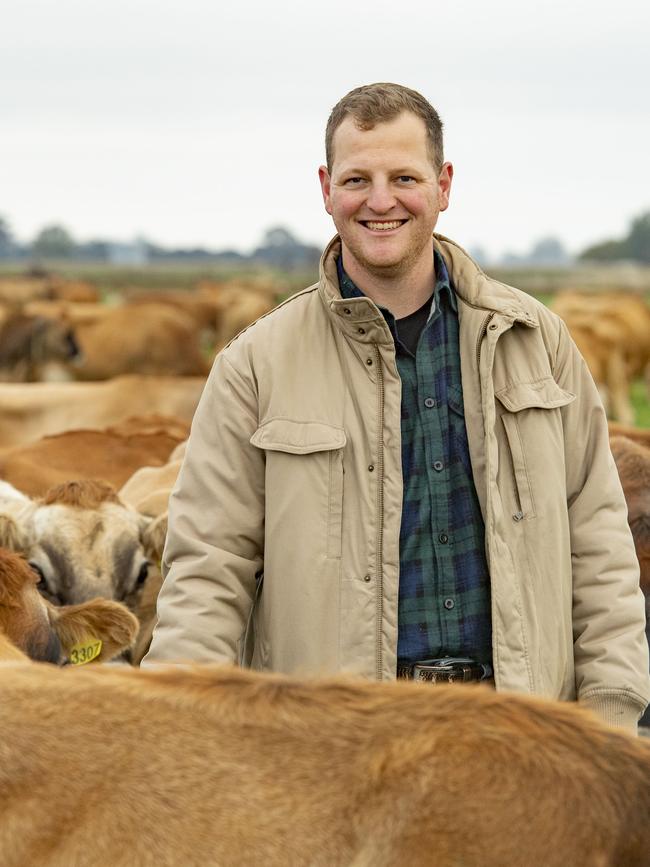
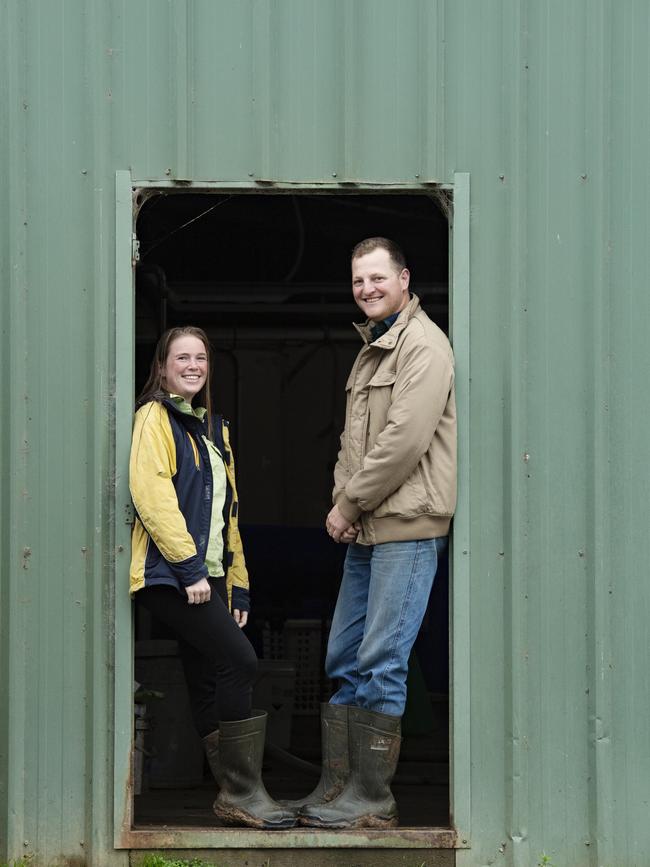
CONTINUAL LEARNING
Amabel has a degree in agriculture science from La Trobe University while Martijn completed ag studies at TAFE, and they have travelled globally learning from the best in the industry.
“We have seen a lot and created our own perception of what best practice would look like,” Amabel said.
They both jump at any opportunity to gain more knowledge, and Amabel strives to share their leanings with others.
“My big passion is just making other people realise how many opportunities are available to them through the dairy industry,” Amabel said. “To be a farmer isn’t a dumb man’s game. It’s not the fallback plan. There are so many smart people in this industry and so many opportunities to travel overseas, see different farms, develop personal leadership skills and communication skills.
“I wish more people would see that side of things.”
Amabel has been highly involved in championing the dairy industry through networking groups, extension programs and overseas tours to her work with the Gardiner Foundation.
Martijn, who is taking part in the Upskill and Invest scholarship program, added: “Amabel is very good at getting you to try to learn more, and making you feel smarter than you probably felt before.”




